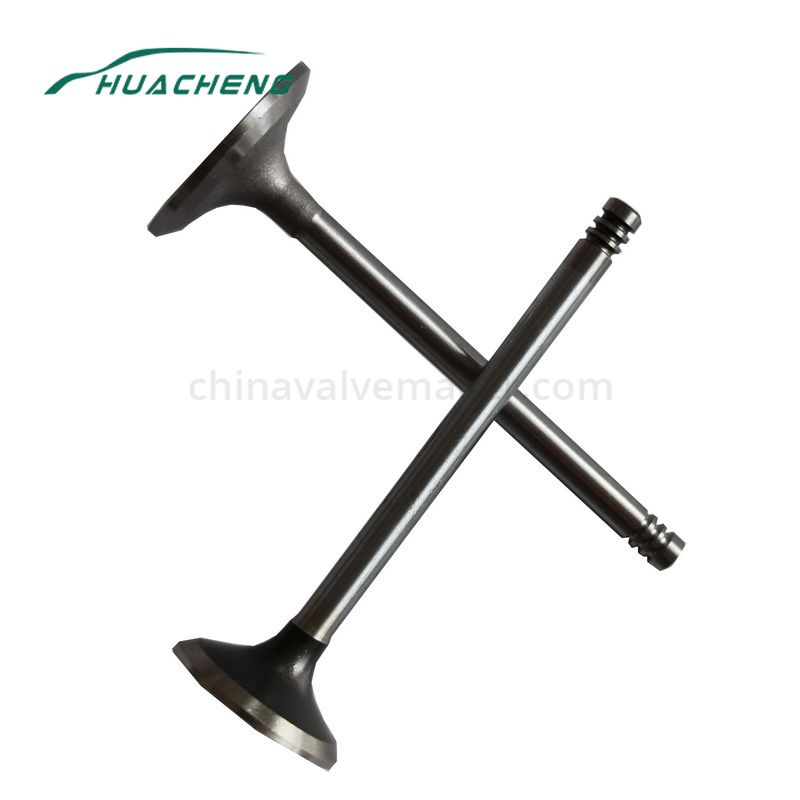The intake and exhaust valves are the final components of the valve train system. They are made of hard metal and must withstand the extreme conditions of the combustion chamber. Their shape is to have a slender rod leading to a flatter face, and the intake valve is often larger than the exhaust. In many modern engines, there are two intake valves and two exhaust valves per cylinder.

Four conditions must occur for an internal combustion engine to ensure operation. These are called strokes. The first stroke is the intake stroke. During the intake stroke, the air/fuel mixture is drawn into the combustion chamber by opening the intake valve (for direct injection engines, fuel is injected after inhaling air). The next stroke is the compression stroke. Both the intake and exhaust valves are closed, trapping the air/fuel mixture in the combustion chamber. The piston is now forced to compress the air/fuel mixture upwards, making it highly flammable. The next stroke is the power stroke. The compressed air/fuel mixture is ignited by the spark plug. When the exhaust valve and intake valve remain closed, the ignited mixture expands rapidly, forcing the piston down in the cylinder. This, in turn, rotates the crankshaft and then finally turns the vehicle wheels through the powertrain. The last stroke is the exhaust stroke. During the exhaust stroke, the piston will begin to move upward again, pushing the expanded mixture through the now open exhaust valve. After the exhaust gas is discharged from the cylinder, the exhaust valve will close and the intake stroke will occur again. When driving on the highway at 1250 times per minute, the entire cycle will happen!
Although valves may fail for a variety of reasons, the two most common types of failure are curved valves and combustion valves.
When the piston contacts the valve, the valve will bend. This will cause the valve to no longer seal the cylinder correctly. Many engines are disturbing engines, which means that the piston moves upward beyond the lowest point where the valve moves downward during normal operation. The engine is timed by a timing belt or chain through the crankshaft that drives the piston and the camshaft that drives the valve. The effect between the two is caused by the timing being interrupted by a timing fault.
When the temperature is too high to damage the valve material, the valve can not be properly sealed, the burnt valve will occur. Typical causes of engine valve burnout are overheated vehicles or incorrect fuel.